Contents
Late-ripening varieties of potatoes in gardens are not very common. It’s all about the peculiarities of potatoes with a long growing season. The ripening of root crops takes from 95 to 140 days after the appearance of the first shoots, so long warm weather lasts far from all regions of the country. Therefore, most often potatoes of late varieties are grown in the southern regions, where the summer season captures May and September.
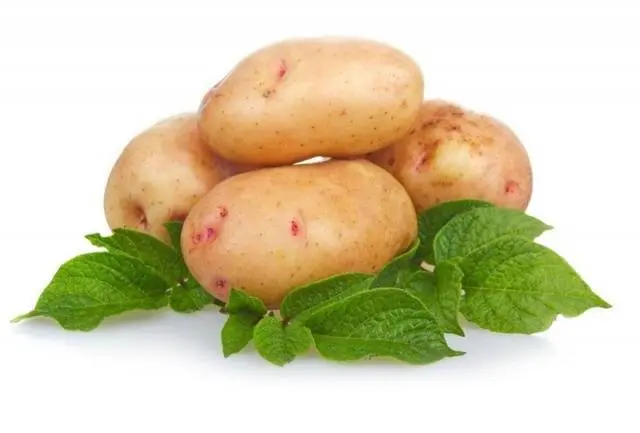
What is special about late potatoes, and what varieties of this vegetable are better to prefer for your garden – this is an article about this.
Characteristics of late potatoes
Potatoes of late varieties are divided into two categories:
- mid-late;
- late.
Medium-late varieties of potatoes ripen after 95-110 days after the first shoots appeared on the beds. At the same time, late potatoes have a growing season of 110-140 days.

The features of both medium late potatoes and just late potatoes are the same:
- These root vegetables contain the largest amount of nutrients and carbohydrates – potato dishes are hearty and very tasty.
- The percentage of starch in tubers ranges from 12 to 20%, which is an average indicator, that is, the tubers are well boiled, but at the same time they can keep their shape in soups and other dishes.
- Potatoes of late varieties have the best keeping quality – these root crops can last until next summer without losing their presentation and taste. Therefore, late varieties are most often grown for the purpose of long-term storage.
- Due to the long growing season, potatoes catch the peaks of the development of all diseases, from late blight to scab, therefore, when choosing a variety for your site, you must give preference to well-protected hybrids and varieties, as well as regularly treat the bushes with special preparations.
- It is necessary to dig up tubers of late varieties only in dry weather, there should not be soil left on the potatoes, otherwise they will not be suitable for long-term storage.
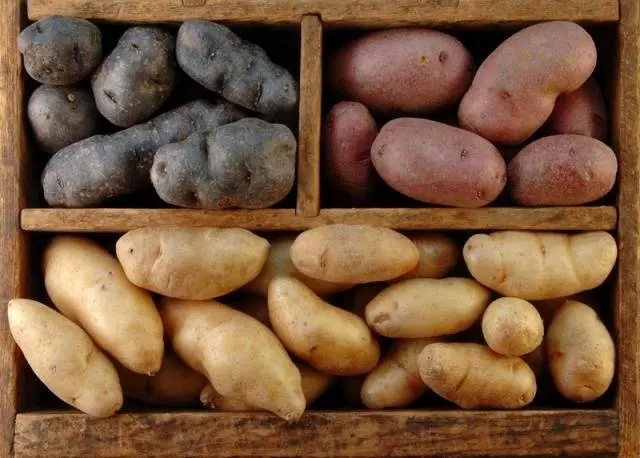
“Asterix”
This potato belongs to the varieties of Dutch selection, but it is perfectly zoned for the Far Eastern and Middle Volga regions of Our Country.
Bushes grow up to 80 cm, erect, not sprawling. Potato blooms with red-purple inflorescences. The vegetation period of the variety is 110-120 days after germination.
The shape of the root crops is oval, the tubers are painted red. The taste characteristics of potatoes are excellent. This variety is often used for french fries or industrial potato chips.
The variety is quite productive – up to 300 centners of vegetables can be harvested from each hectare of land. Approximately 2 kg of potatoes ripen in each bush.
Plants are hardened against most diseases such as fusarium, golden nematode, cancer and scab. Potatoes are also not afraid of viral diseases, they are immune to late blight.
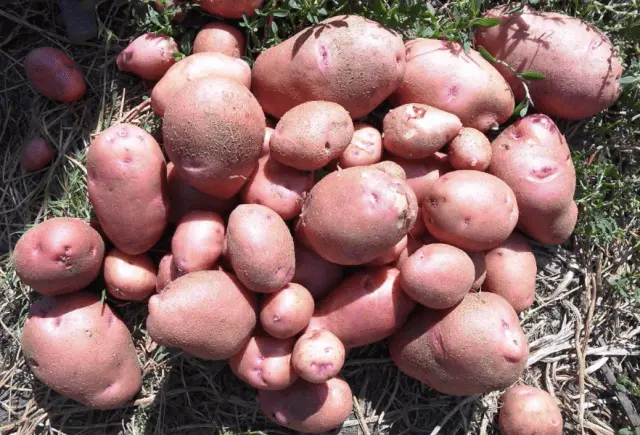
“cranberry”
This variety is bred in Belarus, but perfectly “taken root” in the territory of the middle part of Our Country. The maturation period is from 100 to 110 days, which makes it possible to classify the variety as mid-late.
Plants are medium – up to 60 cm high, sprawling, bloom with red-violet inflorescences. The peel of potatoes is also red, the tubers are quite large, rounded.
The variety has a very high yield – with proper care per hectare of the field, you can collect up to 600 centners of root crops. About 16 medium tubers ripen in each bush.
Variety “Zhuravinka” is resistant to weather and climatic conditions, potatoes tolerate periods of drought and a sharp drop in temperature. But the weak point of the variety is the predisposition to infection with late blight, leaves and tubers of potatoes most often suffer from this disease.
The late variety is protected from nematodes, cancer and scab, it is not afraid of the “black leg”.

“Zarnitsa”
Another potato, originally from Belarus, which can also bear fruit well in southern and central Our Country. It takes from 120 to 140 days to ripen this variety, so gardeners from the middle lane need to carefully analyze the climate in their locality before choosing this variety for planting.
The bushes are low, only 60 cm each, the plants bloom with red-violet inflorescences, and the root crops have a red skin. Potatoes are quite large, the average weight of each is about 120 grams.
About 15 tubers ripen at the same time in each hole. The yield of the variety is considered high – more than 500 centners per hectare of land.
A distinctive feature of the Zarnitsa variety is its unpretentiousness to the composition of the soil – potatoes bear fruit equally well on any soil. Another plus is drought tolerance.
But the variety is “afraid” of viruses and diseases; late blight and other fungal diseases can be fatal for it. But the variety is protected from the “black leg”, scab, nematode and potato cancer.
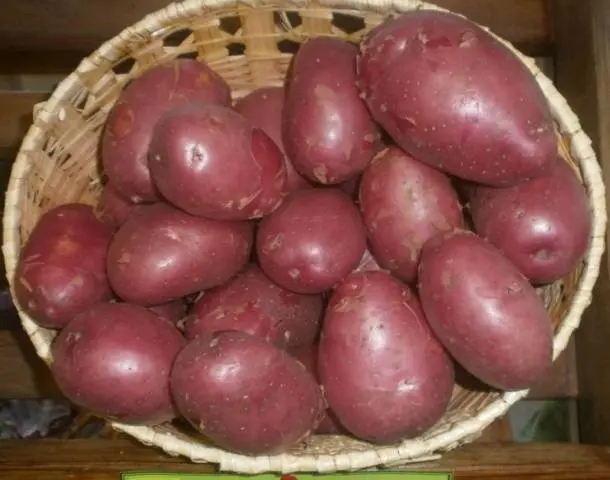
“Profit”
Potatoes with a purely Belarusian name also grow well in Our Country. The vegetative period is from 120 to 140 days after planting the tubers.
Bushes of medium height, bloom with red-purple inflorescences. The tubers are colored red, have a fairly large mass – 100-120 grams.
Up to 15 potatoes ripen in each hole, which makes it possible to collect up to 320 centners of potatoes per hectare of land suitable for storage and transportation.
This variety is distinguished by a high percentage of starch in the composition – up to 28%, which significantly affects the variety and nutritional value of tubers. These potatoes make wonderful mashed potatoes and casseroles.
Plants are partially protected from phytophthora, do not suffer from nematodes, scab and cancer.
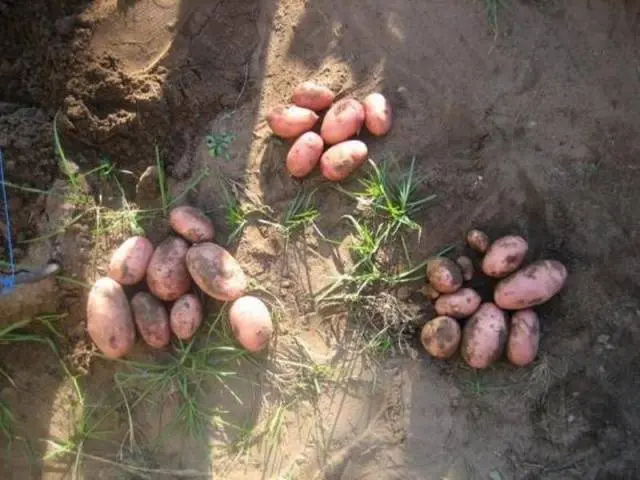
“Lorch”
One of the oldest varieties of potatoes, selected in Our Country, acclimatized for the central part of the country and the southern regions. Tubers ripen after 120-140 days from the planting date.
The bushes are quite high – up to 0,8 meters, erect, bloom with inflorescences of a red-violet hue. Root crops are painted in a light beige shade. The average weight of potatoes is 120 grams.
Up to 15 large potatoes can be found in each hole at the end of the season. The yield of the variety is considered good and is about 350 centners per hectare of fields. The taste of potatoes is excellent, there is a lot of starch in it (about 20%). Tubers can be stored until the next season without loss of taste and nutritional value.
Plants are protected from late blight, bacteriosis and various viruses. But this variety will have to be protected from cancer and scab, Lorch does not have immunity against these diseases.
He does not like potatoes of drought and too much heat, so you need to ensure regular artificial watering of the site and monitor the condition of the soil between the bushes.

“Saturn”
Medium-late potato variety, which is most often used for processing and obtaining potato products. The palatability is normal, but for family consumption, you can find tastier potatoes.
But for industrial scale, for the production of alcohol, starch, this potato is ideal. Plants are tall, bloom with white inflorescences.
The tubers are oval in shape, yellowish in color, the peel of the root crops is rough, and the flesh is yellow. The starch content is high – up to 21%. The average weight of root crops is 100 grams.
Potatoes are perfectly stored, transported, and can be grown for sale. The yield is good – up to 280 centners per hectare. The most important advantage is that potatoes are not afraid of viral and bacterial diseases, they are protected from late blight, cancer and scab.
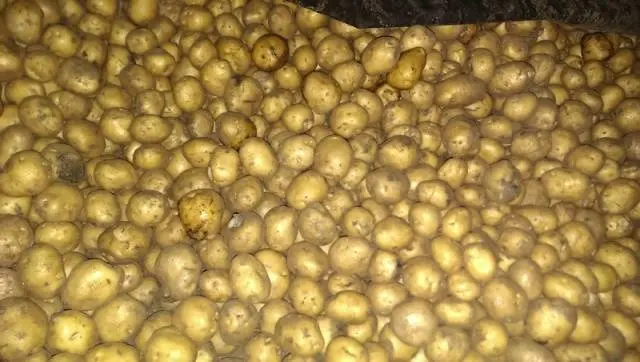
“Gull”
Late-ripening variety of domestic selection, intended for human consumption. The growing season is a maximum of 120 days after planting. It is preferable to grow potatoes in the Volga-Vyatka and North-Western regions of Our Country.
Medium-sized potatoes, each weighing from 75 to 120 grams. The tubers are painted in a yellow tint, the flesh inside is light yellow. The taste is quite high – potatoes are suitable for cooking almost all dishes. The percentage of starch content is low – up to 15%.
Up to 11 tubers ripen in the hole. The yield of the variety is high – up to 400 centners per hectare of land. The ability to store root crops is very good – about 92% of the crop lies until the next season.
Potatoes are resistant to cancer, moderately susceptible to nematode and late blight of leaves and tubers, in some seasons can be affected by scab.
Plant care methods are standard, experts recommend sprouting tubers before planting in the ground.
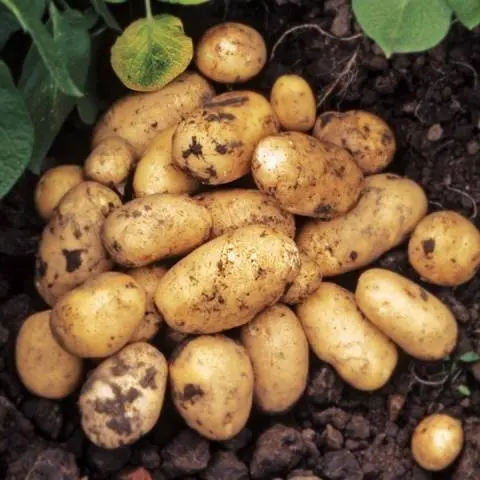
Atlant
Belarusian potatoes, “useful” in most of Our Country. The vegetation period of the variety is 100-120 days from the date of planting the tubers.
The tubers are colored yellow, have a thick peel and dense flesh of light yellow color. Taste qualities are very high, potatoes are suitable for cooking any dishes, as well as for processing and making chips.
The shape of the root crops is round-oval, they contain a large amount of starch – up to 21%. Potatoes weigh from 90 to 120 grams.
The Atlant variety does an excellent job with viruses and diseases, it is able to withstand the nematode and late blight. Potatoes give consistently high yields – up to 650 centners per hectare, regardless of weather conditions and temperature.

Recommendations for growing late potatoes
It is clear that with such maturation terms, late-ripening potatoes do not claim to be harvested two or three times per season, which, of course, affects the yield. However, this disadvantage is more than compensated by the excellent taste of tubers, as well as the ability of potatoes to maintain their marketable appearance for a long time and feed the gardener’s family until the next harvest.

Growing potatoes of late varieties in the southern part of the country, you can not be afraid that the root crops will not have time to ripen – the potatoes will have enough time to fully ripen. Already in the central regions of Our Country, late potatoes should be planted with caution – there is a high probability of catching spring frosts or not being able to dig up tubers from dry soil (autumn rains may be taken by surprise).
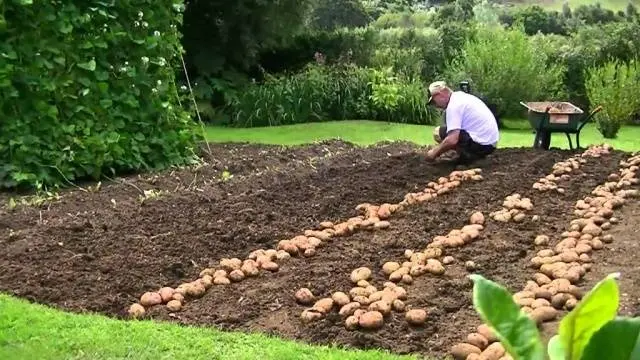
For the northern part of the country, the cultivation of late potatoes is the exception rather than the norm. If the gardener nevertheless decided to take such a risky step, he is recommended to pre-germinate the tubers, and then plant the finished bushes on the beds. This is the only way to reduce the time the plants spend in the garden and have time to get a good harvest.

Potatoes of late varieties have their own advantages, therefore they are in demand by gardeners no less than early ripening varieties. Growing such potatoes, you must follow some rules and choose high-quality seed material.









